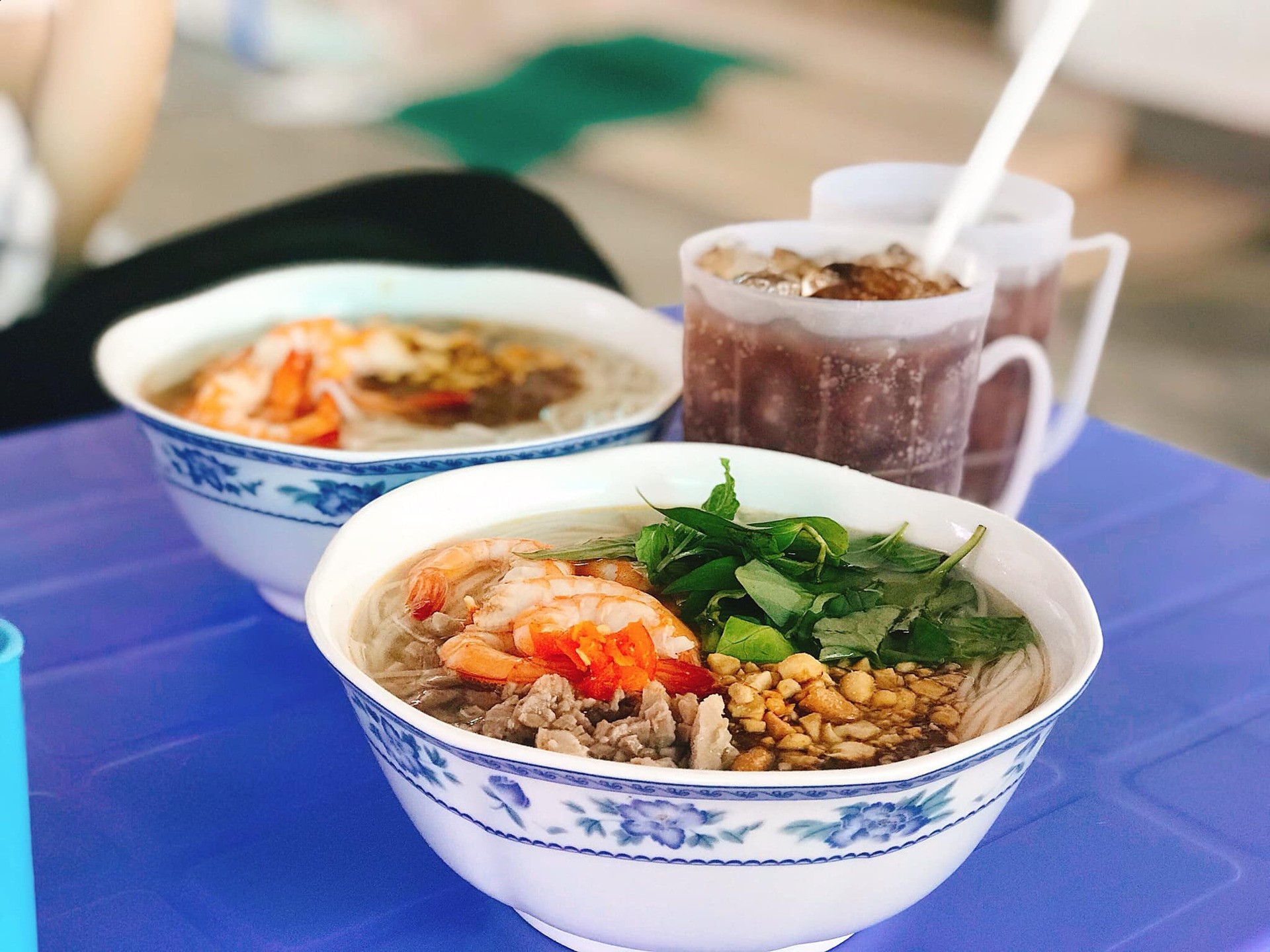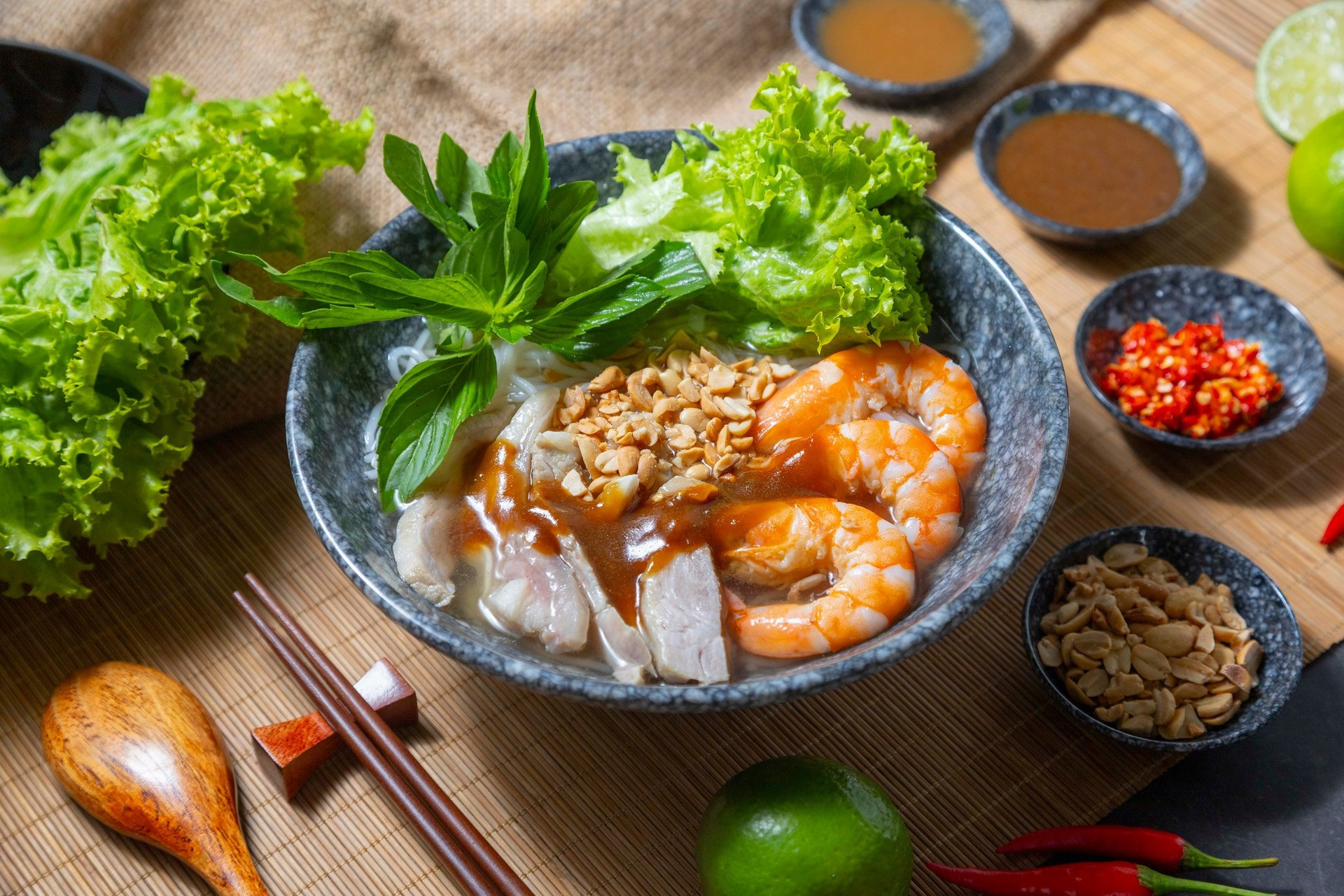Not only visually appealing and flavorful, Soc Trang’s signature dish bún gỏi dà also intrigues visitors with its unusual name - often mistaken as a typo.

The southern Mekong Delta province of Soc Trang is known for its rich natural beauty and diverse cuisine, featuring dishes like hủ tiếu cà ri Vĩnh Châu (Vinh Chau curry noodle soup), bún nước lèo, cháo cá lóc rau đắng (snakehead fish porridge with bitter herbs), bánh pía, and mì sụa. Among these, the oddly named bún gỏi dà stands out as both delicious and culturally distinctive.
“In my Mekong Delta tours, I always take guests to try bún gỏi dà in Soc Trang, especially because of a local saying: ‘My Xuyen has bún gỏi dà, one taste brings the essence of home,’” shared Trần Hung, a seasoned tour guide from Ho Chi Minh City.
“Many visitors, particularly from northern Vietnam, assume I mispronounced bún gỏi gà (chicken salad noodles). Only after I explain do they realize the unique history behind the name - and they’re all impressed after tasting it,” he added.

Bún gỏi dà, according to locals, is an evolved version of gỏi cuốn (Vietnamese fresh spring rolls). While the original rolls contain vermicelli, shrimp, pork belly, herbs, and lettuce wrapped in rice paper and dipped in sauce, bún gỏi dà deconstructs the ingredients into a noodle bowl format. Instead of being rolled, the components are placed into a bowl and served with broth and a scoop of rich fermented soybean sauce (tương xay).
The name “gỏi dà” is believed to have originated from how Southerners pronounce bún gỏi và - with và (meaning “to scoop or eat with gusto”) gradually shifting in pronunciation to dà or già over time.
Hung added, “The most famous places to try bún gỏi dà are Ngọc Nữ in My Xuyen and Co Hang’s eatery in Soc Trang City.”
Though inspired by gỏi cuốn, the bowl version features bún (rice vermicelli), shrimp, pork, lettuce, herbs, bean sprouts, crushed peanuts, and a dollop of soybean sauce. Yet the soul of bún gỏi dà lies in the broth. Each chef has their own recipe, often using pork bones simmered with river shrimp and tamarind for a sweet-sour balance. The sauce, too, is meticulously prepared so the fermented soybean doesn't overpower the dish.
 |
 |
Each serving comes with a separate dipping plate of thick soybean sauce. The pork must remain moist and sweet, sliced evenly. Shrimp should be fresh and vibrant. The bowl is topped with herbs like Vietnamese balm, banana blossom, and Thai basil, with a drizzle of peanut-sauce blend and fragrant garlic oil.
The result is a vibrant bowl with white pork and noodles, red shrimp and chili, green herbs, and the earthy brown of tương xay, all infused with the aroma of fish sauce and tamarind.
Authentic enjoyment involves scooping the noodles into one’s mouth with speed - just as locals do.
Outside Soc Trang, the dish has taken on regional twists. In Ho Chi Minh City, for example, some versions swap tương xay for mắm ruốc (fermented shrimp paste), and replace sliced boiled pork with ribs or pork ear, adding sticky rice sauce for extra texture.
In My Tho, Tien Giang, the dish often includes chewy pork ears for a satisfying crunch.
It’s easy to confuse bún gỏi dà with another local favorite, bún nước lèo. Though both use vermicelli, shrimp, fresh herbs, and broth, the latter features a broth made from fresh coconut water and fermented fish (such as mudfish or snakehead), strained thoroughly before serving. Bún nước lèo is typically paired with deboned snakehead fish fillet.
Linh Trang